
Do you have a question about the Trane Voyager YH Series and is the answer not in the manual?
| Brand | Trane |
|---|---|
| Model | Voyager YH Series |
| Category | Air Conditioner |
| Language | English |
Defines safety advisory types: WARNING, CAUTION, and NOTICE.
Emphasizes hazards and requirements for safe electrical field wiring.
Details essential PPE for technician safety during installation and servicing.
Provides a summary of the manual's content and its importance for proper operation.
Details the unit's basic components, control systems like RTRM, and communication options.
Describes various sensors, switches, and controls interfacing with the unit's system.
Outlines procedures for inspecting the unit upon arrival for shipping damage and correctness.
Specifies minimum distances required around the unit for proper operation and service access.
Details safe procedures and precautions for lifting and moving the unit.
Covers requirements for roof and ground foundations, including structural support and leveling.
Lists critical steps and considerations for a successful commercial unit installation.
Instructions for setting up factory-installed economizer features for optimal performance.
Specifies guidelines for connecting the unit's main power supply according to code.
Details standard and optional wiring methods for supplying main power to the unit.
Wiring instructions and guidelines for low-voltage control circuits operating at 24 Vac.
Explains how to wire multiple remote sensors for accurate space temperature readings.
Addresses power supply voltage imbalance issues and their impact on motor longevity.
Guides on verifying and correcting electrical phasing for three-phase motors.
Explains the importance and function of crankcase heaters for compressor protection.
Describes the setup procedure for modulating gas heat systems with variable turndown.
Details how the unit manages cooling capacity across three stages for optimal comfort.
Installation instructions and safety precautions for factory-mounted circuit breakers and disconnects.
Information on installing and wiring convenience outlets for power and unpowered options.
Instructions for installing a return air smoke detector, including pre-requisites and mounting.
Explains airflow requirements for proper smoke detector function and sampling.
Provides instructions for making field connections for the through-the-base gas utility option.
Details the installation and mounting locations for the Air-Fi wireless communication interface.
Describes three methods (Step, Resistance, Auto) for cycling unit components during testing.
Guides on ensuring correct airflow for optimal system performance and reliability.
Instructions for starting up the economizer system and verifying damper positions.
Procedures for starting compressors, checking rotation, and verifying operating parameters.
Details the process for activating and testing the dehumidification function.
Procedures for initiating the unit's heating cycle, including checks for modulating gas heat.
Discusses VAV system operation, including supply air temperature control and duct static pressure.
Describes the functionality of the ReliaTel control system, including diagnostics and compressor timing.
Details how the system operates in cooling mode when an economizer is not utilized.
Guides on setting up the economizer based on ambient temperature, enthalpy, or comparative enthalpy.
Explains the heating control logic for gas-fired units, including modulating heat and ignition sequences.
Covers the conditions under which the unit initiates dehumidification and its operational priorities.
Explains how the unit manages indoor fan speed for cooling operations under Title 24 regulations.
Details how the system responds to supply fan failures, ventilation overrides, and sensor failures.
Describes the operation of DCV systems, including damper control and fan speed adjustments.
Explains VAV control logic, including staging, fan speed modulation, and economizer integration.
Procedures for setting economizer damper positions for units without Demand Controlled Ventilation.
Describes heating control strategies for VAV units, including staged and modulating heat.
Covers operational aspects for SZVAV and Traditional VAV applications, including filter monitoring.
Explains the function and activation of the Daytime Warm-up feature for unoccupied periods.
Details how the economizer interacts with mechanical cooling for optimal efficiency.
Describes the unit's behavior and status when set to the 'Off' mode.
Explains the function of the emergency stop input and its effect on unit operation.
Describes the role of low-pressure controls in protecting compressors from low operating pressures.
Explains how the Frostat control prevents evaporator coil freezing during cooling operation.
Step-by-step instructions for adjusting and maintaining fan belt tension for belt-drive units.
Outlines essential monthly checks for filters, motors, controls, and overall unit condition.
Instructions and rationale for cleaning condenser coils annually to maintain efficiency.
Specific instructions and warnings for cleaning microchannel coils to prevent damage.
A section for recording unit data for future reference and documentation.
Procedures for checking the ReliaTel control module's status and diagnosing system failures.
Methods for verifying the unit's operational status using LED indicators or voltage checks.
Instructions on how to reset cooling or heating lockouts after a fault condition.
Explains the function of the ZTS service LED and its common indicators for filter or fan issues.
Procedures for testing the ZTS component by measuring resistance and voltage.
Steps for testing serial communication voltage and functionality of programmable zone sensors.
Information on the RTRM's default operating mode when system input is lost.
Guides for troubleshooting the economizer control module using LED indicators and error codes.
Specific warranty coverage details for units under 20 tons for commercial applications.
Warranty terms and conditions applicable to larger commercial units (20 tons and above).



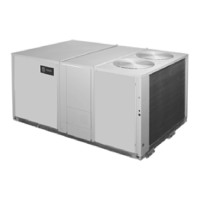
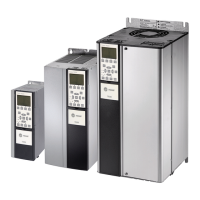


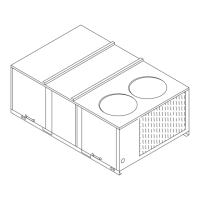

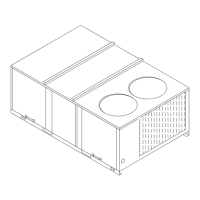
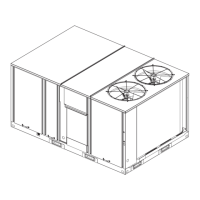

